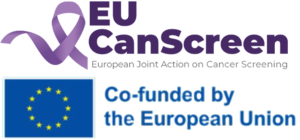Work Package 6:
Addressing barriers and facilitators in cancer screening
WP 6
Addressing

OUS, Norway
Work Package Summary
The overall objective is to coordinate and support activities reducing inequalities in access to and quality of breast, cervical and colorectal cancer screening programs and care services in Europe.
Specific objectives are as follows:
1) To identify and address barriers and facilitators both at the system level within various health systems and at the individual level within different cultures;
2) To facilitate the exchange of experiences and best practices among the MS to ensure sustainable breast, cervical and colorectal cancer screening programs.
OUS, Norway
Tasks
Subscribe to our newsletter to get news and updates.
Subscribe to our newsletter to get news and updates.

The general objective of EUCanScreen is to assure sustainable implementation of high-quality screening for breast, cervical and colorectal cancers, as well as implementation of the recently recommended screening programs – for lung, prostate and gastric cancers. EUCanScreen will facilitate the reduction of cancer burden and achieving equity across the EU.
This project has received funding from the European Union’s EU4HEALTH Programme under the Grant Agreement no 101162959










